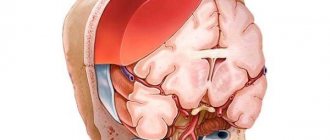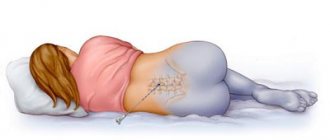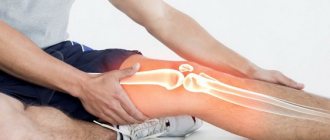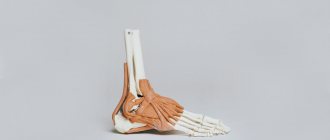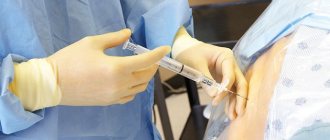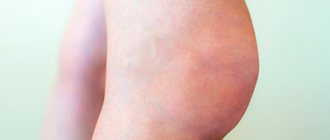Home / About painful problems / Serious non-serious injury: how to help with bruises
Injuries
Perhaps bruises are one of the most common types of household or sports injuries. Sometimes all it takes is a minor bump and bump, a fall, a bump or a blow to cause painful bruising and swelling on an arm or leg. And although a bruise is not considered a serious injury in everyday life, it can cause significant inconvenience and have quite serious consequences for health. This is why it is so important to know what needs to be done in the first hours after an injury.
article 1
Symptoms of a bruised collarbone
Formation of a hematoma in the clavicle area
The clavicle has a rather complex structure, so if injured, the rehabilitation period and consequences can be quite unpredictable. One of the main tasks in case of injury is to try to diagnose the pathology before the arrival of an emergency medical team and provide medical assistance.
Patients with a bruised collarbone most often complain of the following symptoms:
- If nerve endings are affected, a person may lose sensitivity of the skin in the area of damage.
- Aching and/or sharp pain that limits the mobility of the limb.
- The formation of a large hematoma or bruise on the collarbone is caused by the accumulation of blood in the subcutaneous tissue due to a violation of the integrity of the blood vessels.
- Swelling of the bruised area, as well as painful swelling, indicating the development of an inflammatory process.
- Shoulder drooping.
This clinical picture may also indicate more serious damage, but in this case the bones remain intact, only muscle tissue, layers of the epidermis and the surface of the skin are damaged. When a bruise occurs, the arm does not cease to function completely; movements of the limbs simply cause pain, which gradually subsides on its own.
If a child’s collarbone hurts after a blow, it is recommended to consult a pediatric traumatologist, since the bone structures in children are not yet strong enough and the likelihood of a fracture is high.
Diagnosis of pain in the collarbone
Specialists at the CELT Pain Clinic do not recommend self-medication, as it can cause irreparable harm to your body. In order for the treatment to be successful, it is necessary to identify the reason why the collarbone hurts and direct all efforts to eliminate it.
In addition to being examined by a doctor and taking a medical history, diagnosing collarbone pain includes the following:
- radiography of the collarbone;
- CT scan;
- Magnetic resonance imaging.
Causes of bruise
If you fall on your shoulder, you can get a bruised collarbone
. As a rule, the following factors are the cause of a bruised collarbone:
- direct blows falling into this area;
- an unsuccessful fall on an outstretched arm, elbow or shoulder joint, or directly on the shoulder.
The most commonly diagnosed injury is the acromioclavicular joint. The AC joint is the joint of the shoulder girdle that connects the collarbone to the shoulder blade.
Due to the immaturity of the skeleton, their activity and carelessness, children more often receive this type of injury.
Impact loads on the collarbone area and nearby internal organs can cause damage of varying degrees of complexity. Only a qualified medical professional is able to make a correct diagnosis based on the results of instrumental studies.
Causes and symptoms of a clavicle fracture
The main cause is injury resulting from a fall from a great height or a direct blow. This type of injury most often occurs in athletes due to excessive stress and in children due to negligence. Clavicle injuries are also quite common in newborns as they move through the birth canal. This part of the skeleton becomes strongest by the age of 25.
Symptoms of injury vary depending on the type of fracture. However, there are a number of symptoms that are observed in all cases of damage.
Thus, the main symptom is the occurrence of severe unbearable pain. The pain tends to intensify when trying to move the limb. Therefore, the second important symptom is limited mobility. A person is not able to raise his hand, nor turn it, nor move it to the side. To minimize pain, the victim instinctively presses his elbow to his body.
First aid and treatment
First of all, after receiving a bruise, you need to immobilize the body, since any movements can cause severe pain, and if there are fractures or cracks, soft tissues can be additionally injured, which is fraught with unpredictable consequences.
It is recommended to tie the arms to the body or tie them in a scarf so that the limb is completely immobilized. In this case, the elbow joint must be bent and in the physiologically correct position.
To reduce swelling and pain, as well as to stop the flow of blood from the injured joint, a cold compress must be applied to the damaged area. You can take any cold product from the refrigerator or ice, wrap it in a piece of cloth and apply it.
If the patient experiences severe pain, you can take a weak painkiller, for example, Ketorol or Analgin. It is important to maintain the correct dosage and ensure that there is no allergic reaction to the components of the drug.
After providing first aid, you must immediately contact a traumatologist. Self-medication can have a detrimental effect on a person’s health and well-being.
Analgesic is used for short-term suppression of moderate and severe pain and inflammation
Treatment of bruises and dislocations of the collarbone at home or in a hospital requires an integrated approach. The rehabilitation period takes a lot of time. The patient should concentrate as much as possible on full recovery and gradually, slowly, return to their usual way of life. Depending on the characteristics of the damage, conservative and surgical methods of treatment are used. The therapeutic course is based on the following principles:
- pain relief if necessary;
- reduction of the inflammatory process and removal of swelling;
- preventing the development of bacterial infection;
- normalization of innervation and blood circulation of the damaged area;
- reduction of the dislocated edge of the clavicle;
- reliable fixation of the upper limbs to the chest;
- stimulation of the immune system.
It is required to promptly begin rehabilitation measures: massage, therapeutic exercises.
Structure and functions of the clavicle
The clavicle is a curved tubular bone. It has an S shape in the form of a curved key. It is for this reason that it bears such a name. If you think about it a little, the word clavicle comes from the word key, which evokes analogies with the word lock. Thus, the collarbone can be said to “lock” or protect the vital organs of the upper torso.
The clavicle consists of three bones:
- sternal end - the area that is attached to the scapula;
- acromial end - attached to the sternum;
- body - represents the middle part of the clavicle.
The collarbone is easy to find and feel. It is located above the first rib of the sternum.
Its functions:
- thanks to it, the hand moves in a wide range, that is, it is the basis where the shoulder blade and upper limb are suspended in a free state;
- protects the cervical-axillary canal, through which important elements pass, from damage;
- transmits nerve impulses from the upper limb to the axial skeleton.
However, being a long bone, the clavicle does not contain bone marrow like other long bones.
First aid for a broken collarbone
Further treatment and recovery depend on correctly provided first aid. Therefore, first of all, it is necessary to properly immobilize the limb in order to prevent movement of bone fragments and injury to blood vessels, nerves and internal organs (lungs).
First aid is as follows:
- First of all, the victim is given an anesthetic drug.
- A small roller is placed in the armpit area.
- The arm is carefully bent at the elbow and fixed to the body from the shoulder to the hand.
- The shoulder should be parallel to the floor.
- The bandage is attached to the hand, and the hand itself is inserted into it.
Surgery
This type of surgical intervention is called osteosynthesis. During the intervention, bone fragments are removed, and the collarbone is secured with metal devices. There are several types of such surgical operations.
At the moment, the most popular type of intervention is osteosynthesis using screws and plates. If the damage is located in the diaphysis, S-shaped plates or conventional reconstructive ones are chosen. If the injury is localized at the acromial end, other devices may be required: plates with locking screws and hook plates.
Osteosynthesis is also performed using a pin, which is inserted into the bone with a special fixing device.
Surgical treatment also has a number of disadvantages:
- After surgery, bones may not heal properly. This phenomenon is called false joints and develops as a result of a comminuted fracture, poor choice of metal structures, and the complexity of surgical intervention.
- The development of osteomelitis can also cause improper bone fusion.
Rehabilitation after a clavicle fracture
The rehabilitation period lasts 3-4 months, and full recovery occurs after 6-8 months. Of course, recovery time varies as it depends on the extent of the injury, severity, age and overall health.
After surgery, all metal parts are removed after six months or a year. Full recovery occurs within a year. During this period, therapeutic exercises, massage, warm salt baths, and physiotherapeutic procedures are prescribed.
Displaced clavicle fracture
All fractures of this type have their own characteristics. However, several main symptoms can be identified for damage with and without displacement.
Symptoms of displacement injuries:
- severe pain radiating to the shoulder;
- swelling of the damaged area;
- pallor of the skin at the site of the rupture;
- internal and external bleeding;
- violation of the relief of the shoulder blade, it is lowered down, and the limb looks longer due to sagging;
- dysfunction of the shoulder and arm;
- loss of sensation and motor activity;
- hand numbness and nerve damage;
- bone fragments overlap each other;
- a broken collarbone sags and loses its anatomical position.
After an injury, rapid swelling is observed, since the bone fragments are quite sharp and injure nearby vessels, which ultimately leads to the formation of internal bleeding and hematomas. The displacement of the fragments relative to each other causes severe pain. The arm hangs unnaturally (as if dangling) and in order to eliminate this unpleasant symptom, the victim presses it to the body with his healthy hand. There is a limitation of mobility, the hand “does not obey”, since the collarbone was the support for its normal functioning. Crepitation of bone fragments and pathological mobility are also observed.
Treatment involves a rigid bandage, and elastic or soft bandages are prohibited. When fixing the shoulder in the correct anatomical position, the victim is given an anesthetic injection. This procedure is very painful, it is impossible to endure it without anesthesia, in addition, a reflex contraction occurs - muscle retraction, which interferes with the correct fixation of the injured limb.
A displaced fracture is difficult to treat, and in some cases it is accompanied by damage to adjacent bones, muscles, tendons and ligaments. Treatment of open damage is especially lengthy and difficult. In this case, urgent surgical intervention will be required, because bone fragments can damage internal large vessels and provoke severe bleeding, which will threaten the life of the victim.
Classification of injuries
Fractures happen:
- open;
- closed;
- with offset;
- without displacement.
For fractures that result in the formation of fragments, there are:
- transverse;
- oblique;
- splintered.
Determining the type and nature of the fracture is very important for prescribing the subsequent treatment strategy.
Open injuries occur as a result of a violation of the integrity of the skin. There is also rupture of muscles, tendons and ligaments. It is very easy to determine this damage, since a wound has formed at the site of the injury, through which bone fragments communicate with the external environment.
Closed injuries are characterized by the integrity of the skin. Determining this type of damage is much more difficult, since it is difficult to determine where the damage is located.
Displaced clavicle fracture
There are several types of displaced clavicle fractures. Localization of the injury in different places allows us to identify the following damage:
- inner third of the bone;
- middle third;
- outer third.
Fractures of the middle third occur most often, since it is this zone that is more vulnerable due to its anatomical structure, and the anatomical segment itself is the thinnest.
Based on the nature of the fault line, the following damage is observed:
- splintered;
- transverse;
- S-shaped;
- oblique;
- screw;
- T-shaped.
Based on the location of the bone fragments, they are distinguished:
- displaced fracture;
- without displacement.
Damage with displacement can be:
- traditional (classical), when the periosteum undergoes rupture and displaced bone fragments do not hold it;
- partial (incomplete), in which bone fragments are displaced, but the periosteum remains intact and holds them.
Based on the condition of the skin, there are:
- open fracture;
- closed.
